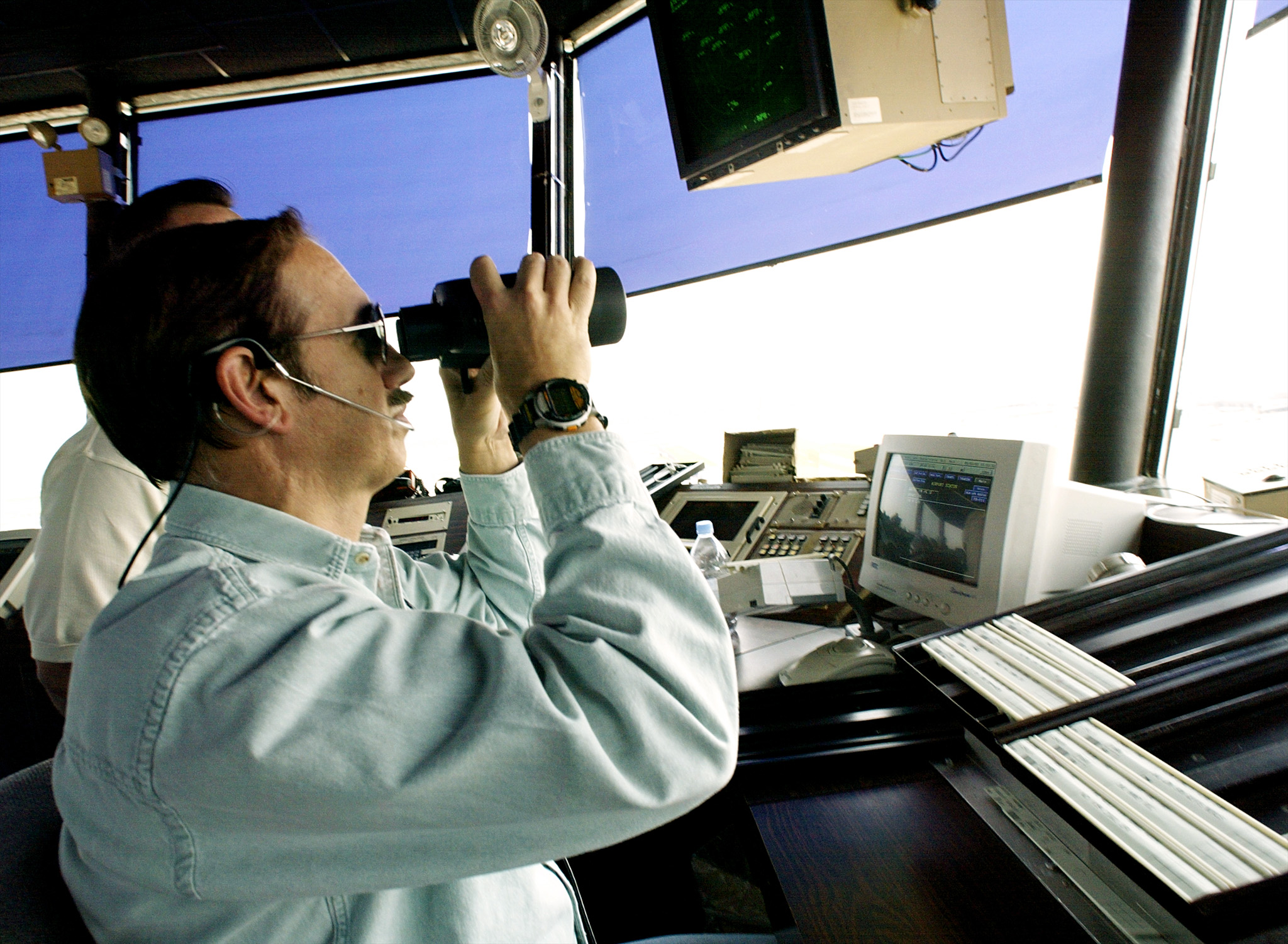Wait, Why Does Trump Want to Change America’s Air Traffic Control System?

President Donald Trump says the nation’s “ancient” air traffic control system is “broken” and “horrible,” and that the only way to fix it is to take responsibility for it away from the government. What is he talking about?
If you fly often, you have probably experienced delays, but the industry is largely effective at transporting more than a million people to their destinations every day. Peel away the president’s exaggeration, though, and he is referring to a real issue: the system for controlling air traffic in the U.S. is based on decades-old radar and radio communications technologies. It would be far more precise and efficient if it used global positioning satellites and digital communication technology instead.
In fact, the Federal Aviation Administration has been working on transitioning the current radar-based setup to GPS for more than a decade, and a substantial portion of the system, under the name NextGen, is complete. Trump and some Republican leaders in Congress say the government has done a poor job of managing NextGen. The solution, they believe, lies in handing responsibility for controlling air traffic to a private, nonprofit organization.
The fact is, though, that NextGen still faces significant technical and political challenges, regardless of who runs it.
When the FAA first described its vision for a “next generation” air transportation system in 2004, it argued that growing demand for air travel would tax the current system and cost consumers up to $20 billion a year in lost mobility by 2025. The new system would take advantage of the latest technologies to reduce delays, save fuel and greenhouse-gas emissions via more efficient flight routes, and increase the capacity of the airspace by a factor of three.
Thirteen years and $7 billion later, things have not turned out as envisioned. The forecast demand hasn’t materialized, and funding from Congress has been inconsistent.
But such a complex, far-reaching system is bound to take many years to deploy, says MIT aeronautics and astronautics professor R. John Hansman, chair of the FAA’s Research Engineering & Development Advisory Committee. Safety is the most important thing, he says, and “by nature these kind of high-integrity, safety-critical systems do not do rapid transformational change.”
The technology at the heart of NextGen is a system called Automatic Dependent Surveillance-Broadcast (ADS-B). Airplanes with ADS-B send out a digital message containing location data from an onboard GPS. Other aircraft, as well as air traffic controllers on the ground, can pick up on the broadcasts, and traffic controllers can use that data instead of radar to track flights. More precise surveillance and communication, including communication between airplanes, could allow them to fly closer together. That way, traffic controllers could safely pack more traffic into a busy airspace.
But the system can’t fully replace radar until every aircraft can broadcast using ADS-B. The FAA has mandated that all aircraft possess that ability by 2020, and while all of the necessary ground stations are in place, as of now less than 20 percent of the U.S. fleet is equipped with ADS-B.
Airlines and others are frustrated because we have seen very little in the way of the promised benefits despite substantial investment, says Hansman: “The technology is not enough.” Taking advantage of it requires also changing air traffic control procedures, but that’s a tough sell because the current system is already so safe and reliable, he says. “It’s performing as well as it’s ever performed.”
As a result, the remaining price tag for getting NextGen off the ground is estimated to be between $30 and $40 billion, and the job is expected to take another decade.
The European Union, meanwhile, has faced similar challenges implementing a parallel project, called Single European Sky. A number of other governments are deploying or have deployed ADS-B as well. In some of them, like India, the current air traffic systems are immature and have relatively little radar coverage to begin with—and that may end up being advantageous, says Hansman. Without as much infrastructure to switch over, these countries may be able to leapfrog more developed nations and reap the benefits of the technology much sooner.
Keep Reading
Most Popular
Large language models can do jaw-dropping things. But nobody knows exactly why.
And that's a problem. Figuring it out is one of the biggest scientific puzzles of our time and a crucial step towards controlling more powerful future models.
How scientists traced a mysterious covid case back to six toilets
When wastewater surveillance turns into a hunt for a single infected individual, the ethics get tricky.
The problem with plug-in hybrids? Their drivers.
Plug-in hybrids are often sold as a transition to EVs, but new data from Europe shows we’re still underestimating the emissions they produce.
Stay connected
Get the latest updates from
MIT Technology Review
Discover special offers, top stories, upcoming events, and more.